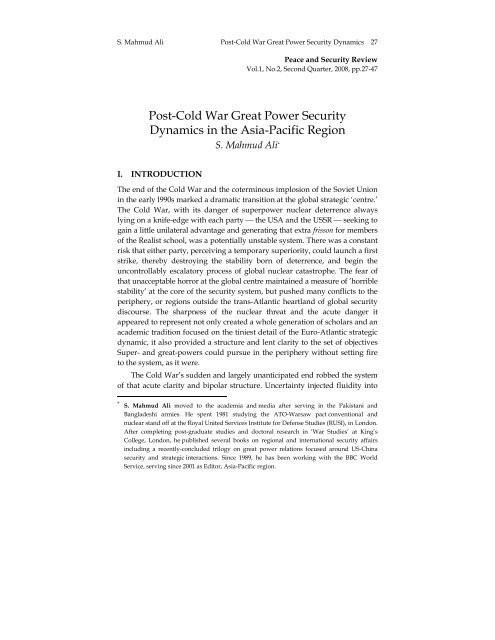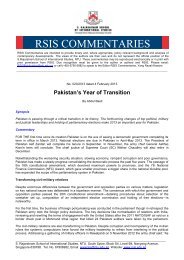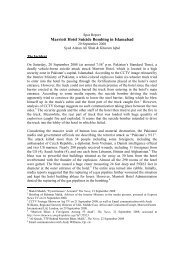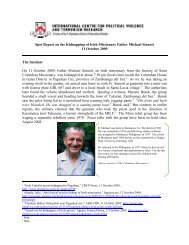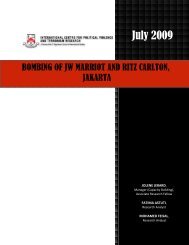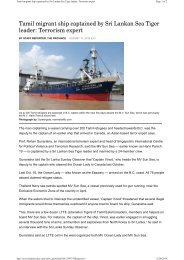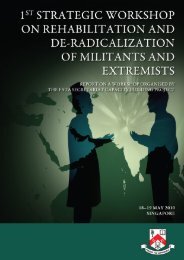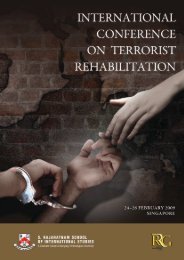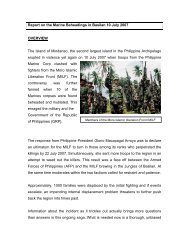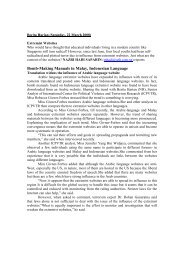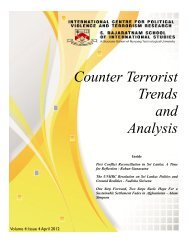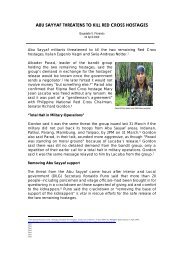Peace and Security Review, Vol.1 No. 2 - International Centre for ...
Peace and Security Review, Vol.1 No. 2 - International Centre for ...
Peace and Security Review, Vol.1 No. 2 - International Centre for ...
You also want an ePaper? Increase the reach of your titles
YUMPU automatically turns print PDFs into web optimized ePapers that Google loves.
S. Mahmud Ali Post-Cold War Great Power <strong>Security</strong> Dynamics 27<br />
<strong>Peace</strong> <strong>and</strong> <strong>Security</strong> <strong>Review</strong><br />
<strong>Vol.1</strong>, <strong>No</strong>.2, Second Quarter, 2008, pp.27-47<br />
Post-Cold War Great Power <strong>Security</strong><br />
Dynamics in the Asia-Pacific Region<br />
S. Mahmud Ali *<br />
I. INTRODUCTION<br />
The end of the Cold War <strong>and</strong> the coterminous implosion of the Soviet Union<br />
in the early l990s marked a dramatic transition at the global strategic ‘centre.’<br />
The Cold War, with its danger of superpower nuclear deterrence always<br />
lying on a knife-edge with each party ⎯ the USA <strong>and</strong> the USSR ⎯ seeking to<br />
gain a little unilateral advantage <strong>and</strong> generating that extra frisson <strong>for</strong> members<br />
of the Realist school, was a potentially unstable system. There was a constant<br />
risk that either party, perceiving a temporary superiority, could launch a first<br />
strike, thereby destroying the stability born of deterrence, <strong>and</strong> begin the<br />
uncontrollably escalatory process of global nuclear catastrophe. The fear of<br />
that unacceptable horror at the global centre maintained a measure of ’horrible<br />
stability’ at the core of the security system, but pushed many conflicts to the<br />
periphery, or regions outside the trans-Atlantic heartl<strong>and</strong> of global security<br />
discourse. The sharpness of the nuclear threat <strong>and</strong> the acute danger it<br />
appeared to represent not only created a whole generation of scholars <strong>and</strong> an<br />
academic tradition focused on the tiniest detail of the Euro-Atlantic strategic<br />
dynamic, it also provided a structure <strong>and</strong> lent clarity to the set of objectives<br />
Super- <strong>and</strong> great-powers could pursue in the periphery without setting fire<br />
to the system, as it were.<br />
The Cold War’s sudden <strong>and</strong> largely unanticipated end robbed the system<br />
of that acute clarity <strong>and</strong> bipolar structure. Uncertainty injected fluidity into<br />
* S. Mahmud Ali moved to the academia <strong>and</strong> media after serving in the Pakistani <strong>and</strong><br />
Bangladeshi armies. He spent 1981 studying the ATO-Warsaw pact conventional <strong>and</strong><br />
nuclear st<strong>and</strong> off at the Royal United Services Institute <strong>for</strong> Defense Studies (RUSI), in London.<br />
After completing post-graduate studies <strong>and</strong> doctoral research in ‘War Studies’ at King’s<br />
College, London, he published several books on regional <strong>and</strong> international security affairs<br />
including a recently-concluded trilogy on great power relations focused around US-China<br />
security <strong>and</strong> strategic interactions. Since 1989, he has been working with the BBC World<br />
Service, serving since 2001 as Editor, Asia-Pacific region.<br />
<strong>Vol.1</strong>, <strong>No</strong>.2 2008 pp.27-47


